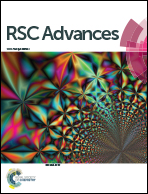A photoactivatable Src homology 2 (SH2) domain†
Abstract
Src homology 2 (SH2) domains bind specifically to phosphotyrosine-containing motifs. As a regulatory module of intracellular signaling cascades, the SH2 domain plays important roles in the signal transduction of receptor tyrosine kinase pathways. In this work, we reported the construction of a photoactivatable SH2 domain through the combination of protein engineering and genetic incorporation of photo-caged unnatural amino acids. Significantly enhanced recognition of a phosphotyrosine-containing peptide substrate by the engineered SH2 domain mutant was observed after light-induced removal of the photo-caging group. Optical activation allows the control of protein and/or cellular function with temporal and spatial resolution. This photoactivatable SH2 domain could potentially be applied to the study of tyrosine phsophorylation-associated biological processes.


 Please wait while we load your content...
Please wait while we load your content...